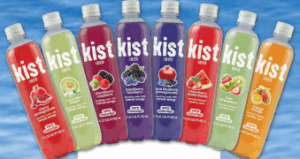The US Court of Appeals for the Federal Circuit reversed a district court’s partial dismissal of the plaintiff’s patent claims under 35 U.S.C. § 101, finding that the claims were not directed to an abstract idea under Alice step one. PowerBlock Holdings, Inc. v. iFit, Inc., Case No. 24-1177 (Fed. Cir. Aug. 11, 2025) (Taranto, Stoll, Scarsi, JJ.)
PowerBlock sued iFit for allegedly infringing its patent related to dumbbells. IFit moved to dismiss the claims under § 101. The district court found that the challenged claim was broadly directed to the idea of automated weight stacking, and that it purported to cover any system having a few basic components for selecting and adjusting weights, rather than describing a specific method or design for how the system actually worked. Applying the Supreme Court’s two-step framework for determining patent eligibility, the district court determined that all but one claim of the asserted patent were ineligible under § 101. PowerBlock appealed.
The Federal Circuit reversed, finding that the district court erred in its Alice step one analysis under § 101. The Court explained that the crux of the district court’s incorrect determination was that the challenged claim was directed to the abstract idea of automated weight stacking, which in turn led to misplaced preemption concerns. The Court found instead that the claim was limited to a specific implementation of a technological improvement – namely, a particular type of selectorized dumbbell featuring nested left and right weight plates, a handle, a movable selector, and an electric motor operatively connected to the selector that adjusts the weight based on user input.
Distinguishing the challenged claim from prior cases in which claims were found ineligible, the Federal Circuit emphasized that the claim was directed to an “eligible mechanical invention” and “focused on a specific mechanical improvement,” not merely an abstract or generalized concept. The Court also rejected iFit’s argument that limitations should be discounted simply because they appear in the prior art. The Court reiterated that it is inappropriate to dissect claims into old and new elements and then ignore the old when assessing eligibility under § 101. Rather, under Alice, the “step one inquiry involves consideration of the claims ‘in their entirety to ascertain whether their character as a whole is directed to excluded subject matter.’” The Court cautioned against conflating the patent eligibility inquiry under § 101 with the separate questions of novelty and nonobviousness under §§ 102 and 103.
read more


 Subscribe
Subscribe



